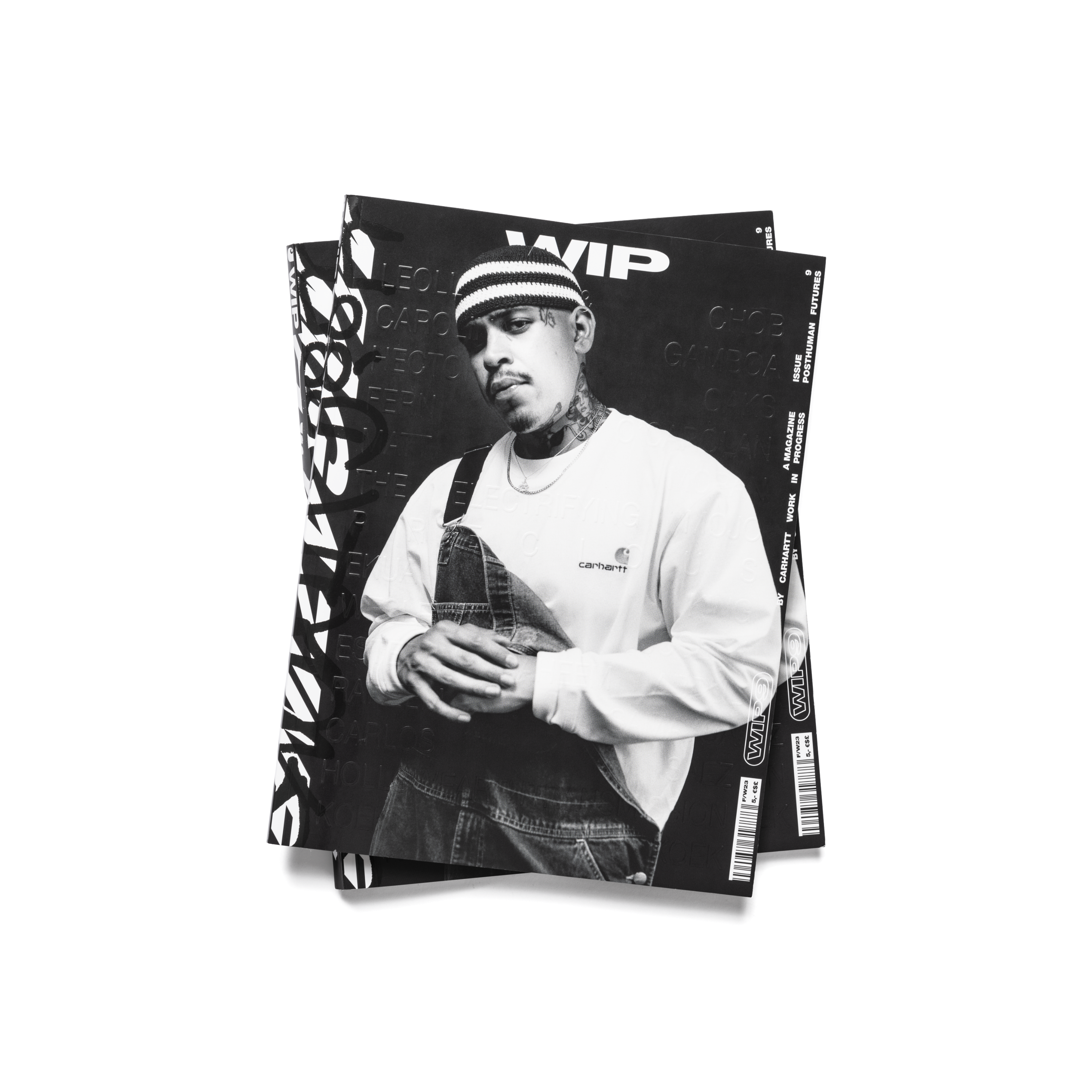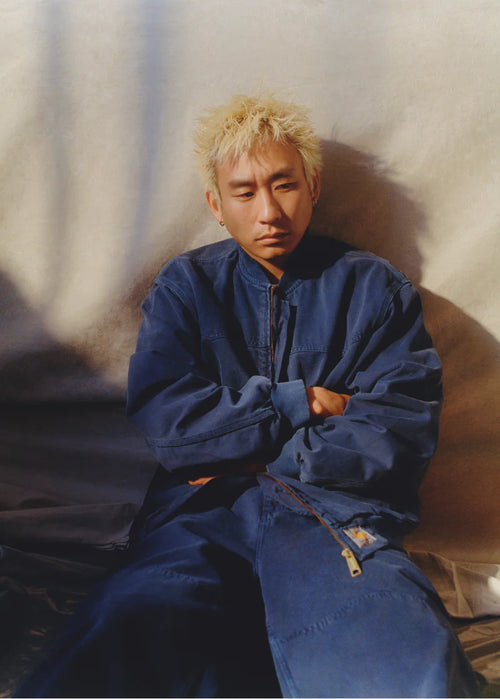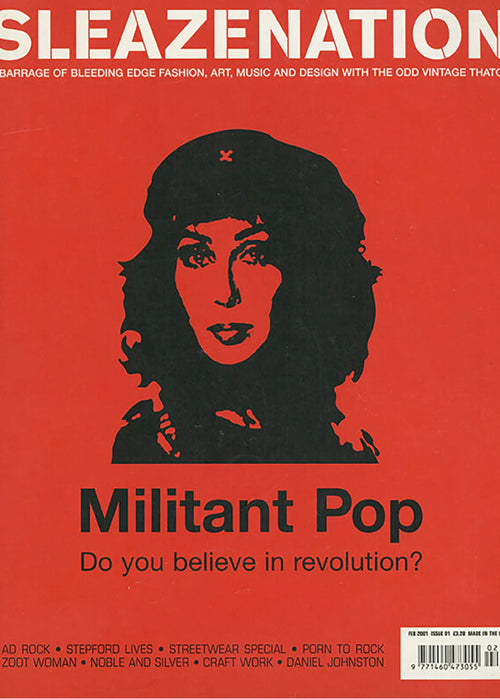
Growing up in Ireland and attending a Catholic school was an alienating experience for Fern O’Carolan – until the artist found salvation in subculture. Today, she makes shrines to teenage bedrooms.

Words: Holly Connolly
Images: Sirui Ma
For those of us who grew up in Ireland through the 1990s and early aughts, childhood and adolescent memories may now have taken on the haze of unreality; of different eras in time layered on top of each other to janky, collaged effect. The artist Fern O’Carolan went to a convent school in Dublin, attending weekly mass and presided over by nuns: “There was a huge emphasis on crafts modules at school – Home Economics, embroidery. It was very old school, submissive housewife kind of 60s vibes. How to make a cake and stuff like that.” But also, O’Carolan was a teenager in the early millennium – away from school she was an emo with a Myspace following. Today, she credits this discovery of subculture with saving her, with showing her a reality outside of the confines of a Catholic girlhood.
As an artist Fern O’Carolan stitches (often literally; she has subverted nun-taught craft to be a part of her practice) together the universal ephemera of a teenage bedroom, creating a kind of iconography for adolescence. She also credits a feeling of duty to subculture and to outsider artists for her recent curatorial involvement in Screw Gallery in Leeds, a venture undertaken alongside her partner Allan Gardner and multiple other artists: “There's a lot of subculture in Leeds; there are skaters, hardcore kids, punks, but there was no space like ours. We felt like we owed the city, and the community, something.”


Holly Connolly: Did you grow up wanting to be an artist?
Fern O’Carolan: When I look back at school essays, even in primary school, it was always, “When I grow up I want to be an artist, or a vet.” Now I'm an artist and a vegan, so it's as close as I can get. I was always drawing, and I can remember my dad taking me to Lucien Freud’s retrospective in Dublin. I would have been super young, maybe nine or something, and he was like, “Fern you won't understand this now, because you're too young, but when you're older you're going to appreciate this, because you're never going to be able to see this type of work all together in the flesh again.”
I remember being a kid and looking at these huge painted dicks, naked people lying on beds, whippets. I can still remember that really clearly and how it made me feel. I understood it, I knew there was something there. I don’t know, I think instinct is a funny thing; some people have an instinct towards things and then some don't.

HC: I’m really interested in how iconography relates to your work. Looking at your pieces, I kept being reminded of what I think of as ‘Catholic paraphernalia’ – rosary beads, statues of Christ, Mary – to my mind in your work, you’re almost making a version of these pieces but for adolescence instead of religion.
FO: I try not to put myself in my work because I like it to be as broad and relatable as it can be, but I definitely take snippets of imagery, objects or items, and things that I’ve experienced, and try and see myself within those, if that makes sense. These images are like metaphors for my own experiences, or things that I have gone through.
I remember in religious studies in school, we’d have these really graphic books with images of praying hands, things like that, but super vivid – they looked Photoshopped almost. Those kinds of images I find really, really interesting.
HC: Why do you think you're so drawn to representing and exploring adolescence in your practice?
FO: I think a lot of it has come from acceptance, because my childhood was quite turbulent in terms of having quite a strict Catholic upbringing. There was a lot of pressure and expectation put on me, especially as a young female. I was constantly policed, and I felt extremely controlled. It was a difficult time. Subculture took me out of that. Without subculture I don't know where I would be; I wouldn't have found myself or escaped, almost, from that.

HC: What would you have self-defined as, as a teenager? What was your specific subculture?
FO: I was an emo! To the core. The nuns at school hated me. I was a scene kid, and I’d go in with really backcombed black hair, with a giant bow plastered on the front. When you're in a bubble, in Catholic school, or the Catholic school that I was in, it’s like being in a time capsule or this fake reality. It didn't feel real. So when I started to get involved in subculture it felt like, actually, this is real life.
HC: A recent show of yours at Slugtown gallery, in Newcastle, was borne out of your discovery of a memory box you had created for yourself as a teenager. What was it like finding the box originally?
FO: It was so weird, I can't explain it. I found it at the back of my wardrobe at home one day a few years ago. I’d always been really into DIY craft annuals and things as a kid, and I remember reading this one, ‘Make your own time capsule.’ I was like, “Oh! That sounds cool!” I got this old Christmas box, and from the age of ten to about 18 I just filled it with all of these cards and letters. Finding it was like going back in time; it was like looking into somebody else's life. There were letters from my first boyfriend when I was 14, bits of emo hair, wristbands that boys had given me. It was absolutely insane. Even stranger, I looked at the date I’d sealed the box and it was exactly the same date, so it was ten years to the day that I opened it.

HC: It’s funny that you've always had that impulse to both document and worldbuild. I wonder if your art practice now, in part, is another version of the same box for an older you.
FO: It is crazy. Adolescence is such a complex time for everyone, you think you know everything but you know nothing. I don’t know what the impulse was, it was like, “This is confusing and I don’t really get it, but I need to document it.” And I knew as an adult that I had the box, but I didn't realize the extent of what was in it. I actually want to do a show of it one day, and have everything on display, because this little box is the crux of my whole art practice. It’s the core that everything comes from.
HC: Do you think you’d find that exposing?
FO: Yes, it is scary. I am daunted by it. But I think I owe it to my practice to showcase where it originally came from. Obviously I will have to redact a few things, there’s a few names that can’t be put forward. But I think people would really relate to this as a show, and there’s an element of closure in there as well, because it took me a long time to accept my history. Now I can actually turn around and say, “I'm over that time. I'm an adult, and this is fine.”



